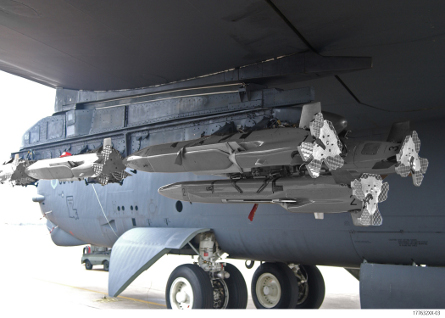A new customer has emerged for the Raytheon ADM-160 miniature air launched decoy jammer (MALD-J) as the company looks to expand the applications and roles of the turbojet-powered, expendable craft.
Offering no explanation, the US Navy has revealed its intention to at least experiment with the air force's developmental MALD-J, which is designed to disrupt flight tracks on enemy radar displays.
The Naval Surface Warfare Center (NSWC)'s Crane Division plans to sign an order with Raytheon worth up to $12.5 million for the MALD-J, according to an acquisition notice.
 |
|---|
©Raytheon |
Raytheon declined to comment on the navy's interest, and the NSWC did not immediately return calls seeking comment.
Meanwhile, Raytheon is attempting to expand the applications for the Teledyne Ryan TJ-50-poewred ADM-160. In March, the company conducted a self-funded release of a MALD shape from the cargo hold of a Lockheed Martin C-130 Hercules.
The test involved the first use of the MALD cargo air-launched system (MCALS), a roll-on/roll-off launcher designed by Raytheon to eject ADM-160s from a variety of cargo aircraft, including the Boeing C-17 and V-22. Raytheon declined to describe how the MCALS releases the decoys from the cargo bay.
 |
|---|
©Raytheon |
It is possible that the MALD-V may need to be modified to be recovered like an unmanned aircraft system. Otherwise, the aircraft's customers will lose a possibly valuable sensor during each flight. But Raytheon declined to answer questions about possible recovery methods for the MALD-V, referring such queries to the Air Force Research Laboratory.
Source: Flight International
















